Significant Knowledge Gap Exists in Patient Awareness of Psoriatic Disease
Using the “Psoriasis and Beyond” survey design, researchers addressed patients’ awareness of psoriatic diseases and their associated comorbidities.
A significant portion of patients with psoriatic disease (PsD) are unaware of the systematic nature, manifestations, and associated comorbidities that commonly accompany it, according to a study published in the Journal of Dermatological Treatment.1
“Psoriasis is a chronic disease in which the immune system becomes overactive, causing skin cells to multiply too quickly,” wrote the National Institute of Arthritis and Musculoskeletal and Skin Diseases.2 “Patches of skin become scaly and inflamed, most often on the scalp, elbows, or knees, but other parts of the body can be affected as well. Scientists do not fully understand what causes psoriasis, but they know that it involves a mix of genetics and environmental factors.”
While there are different types of psoriasis, such as plaque and guttate, psoriatic diseases also include both psoriasis and psoriatic arthritis (PsA). Significantly linked with psoriasis, PsA is a chronic skin and nail disease3 that impacts up to 30% of patients with psoriasis.1 With a complex interplay between patients’ skin and the diseases that impact it, PsD is a debilitating disease that presents physical, psychological, social, and economic burdens, leading to significant decreases in quality of life (QOL).
READ MORE:
The current treatment guidelines for patients with psoriasis include a variety of pharmacological options, such as biologics, phototherapy, and topicals.4 For mild or short-term PsA, treatment guidelines suggest the use of non-steroidal anti-inflammatory drugs as monotherapy. Other PsA cases may implore the need for biological disease-modifying antirheumatic drugs or Janus kinase inhibitors.5
Despite these advancements in treatment options, the management of PsD remains a challenge for providers looking to improve their patients’ QOL. This led researchers to explore a specific region of the world in order to better document patients’ understanding of the disease.
“The prevalence of psoriasis in the Gulf countries is not well-documented; however, recent studies suggested that psoriasis affects 0.5%-5.3% of the population across the region,” wrote authors of the study.1 “The Gulf region is characterized by several cultural factors that can influence patient awareness and experiences of PsD. However, limited data exist from the region concerning the patients’ perception of the systematic nature of psoriasis and their perspectives on the disease burden.”
Using the “Psoriasis and Beyond” survey design, researchers aimed to understand patient awareness of psoriasis and its common comorbidities. They also looked to uncover patient perspectives on how the disease impacted their QOL and what barriers existed in managing and treating their PsD.
Psoriasis and Beyond is a cross-sectional, online survey that recruited patients with psoriasis or PsA. From March 2022 to June 2023, researchers distributed surveys to adult patients from 4 countries in the Gulf region: United Arab Emirates, Kuwait, Qatar, and Oman. The survey included various questionnaires that covered patients’ QOL, their probability of clearing the skin, and psoriasis epidemiology screening.
“Despite the importance of adequate awareness, our study indicated that only 61% of the patients from the Gulf region were aware that psoriasis and PsA are part of a systemic disease, while 63% were aware of the term ‘PsD,’” they continued.1 “Furthermore, a considerable proportion of the patients (27%) were unaware of any comorbidities related to their disease. Most patients could not recognize important manifestations of PsD, such as axial symptoms and PsA.”
A total of 346 patients (mean age, 39.5 years; 54% men; 52 with PsA) were recruited by dermatologists to take the survey. Despite recent reports of PsD growing in prevalence around this region, at least a quarter of patients with psoriasis or PsA were unaware of basic PsD characteristics.
“Such a gap in awareness calls for patient-focused educational efforts in the Gulf countries since aware patients can be motivated to seek comprehensive care rather than focusing solely on dermatological symptoms,” they wrote.
With a lack of awareness toward PsD among the study population, researchers suggested their findings can inform patients in the Gulf region with a lack of knowledge on PsD, as well as future patients universally who may be at increased risk. More specifically, their results highlight the potential for enhancing the patient-provider relationship, aligning treatment goals, and empowering shared decision-making.
“In conclusion, a considerable proportion of patients with psoriasis, with or without PsA, from the Gulf region are not fully aware of their disease’s systemic nature, manifestations, and associated comorbidities. The present survey shows that more than one-third of the patients were unaware that psoriasis is a systemic disease,” concluded the authors.1 “Our results also show a potential for enhancing communication between patients and [providers] to align treatment goals better and empower shared decision-making.”
READ MORE:
Don’t get left behind: Sign up today for our
References
1. Albreiki F, Alfalasi A, Al-Otaibi M, et al. Patient awareness and perspectives on psoriatic disease: results of the Psoriasis and Beyond survey from the Gulf region. J Dermatol Treat. 2025;36(1). https://doi.org/10.1080/09546634.2025.2485254
2. Psoriasis. National Institute of Arthritis and Musculoskeletal and Skin Diseases. October 2023. Accessed June 11, 2025. https://www.niams.nih.gov/health-topics/psoriasis
3. Psoriatic arthritis. John Hopkins Medicine. Accessed June 11, 2025. https://www.hopkinsmedicine.org/health/conditions-and-diseases/arthritis/psoriatic-arthritis
4. Psoriasis guidelines. National Psoriasis Foundation. Accessed June 11, 2025. https://www.psoriasis.org/psoriasis-guidelines/
5. Gossec L, Kerschbaumer A, Ferreira RJO, et al. EULAR recommendations for the management of psoriatic arthritis with pharmacological therapies: 2023 update. Ann Rheum Dis. 2024;83(6):706-719. https://doi.org/10.1136/ard-2024-225531
Newsletter
Pharmacy practice is always changing. Stay ahead of the curve with the Drug Topics newsletter and get the latest drug information, industry trends, and patient care tips.





























































































































